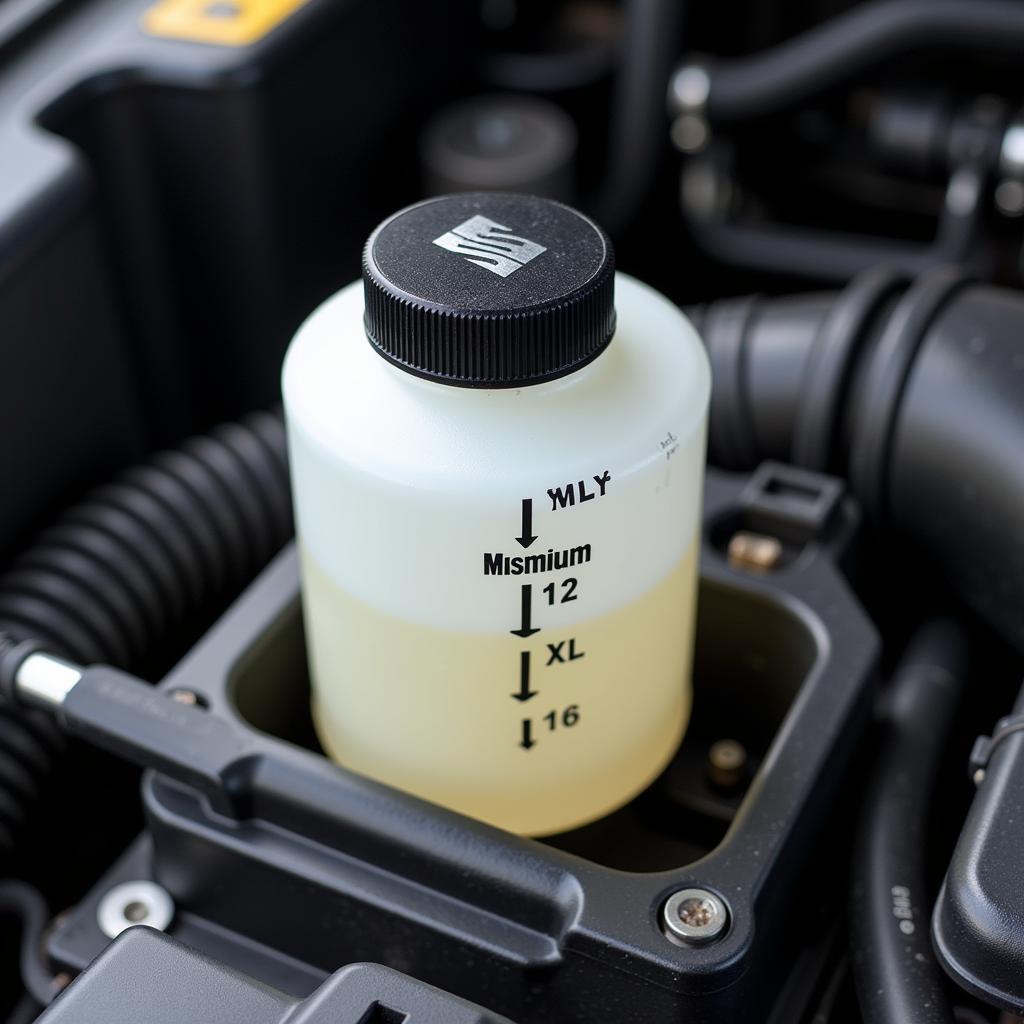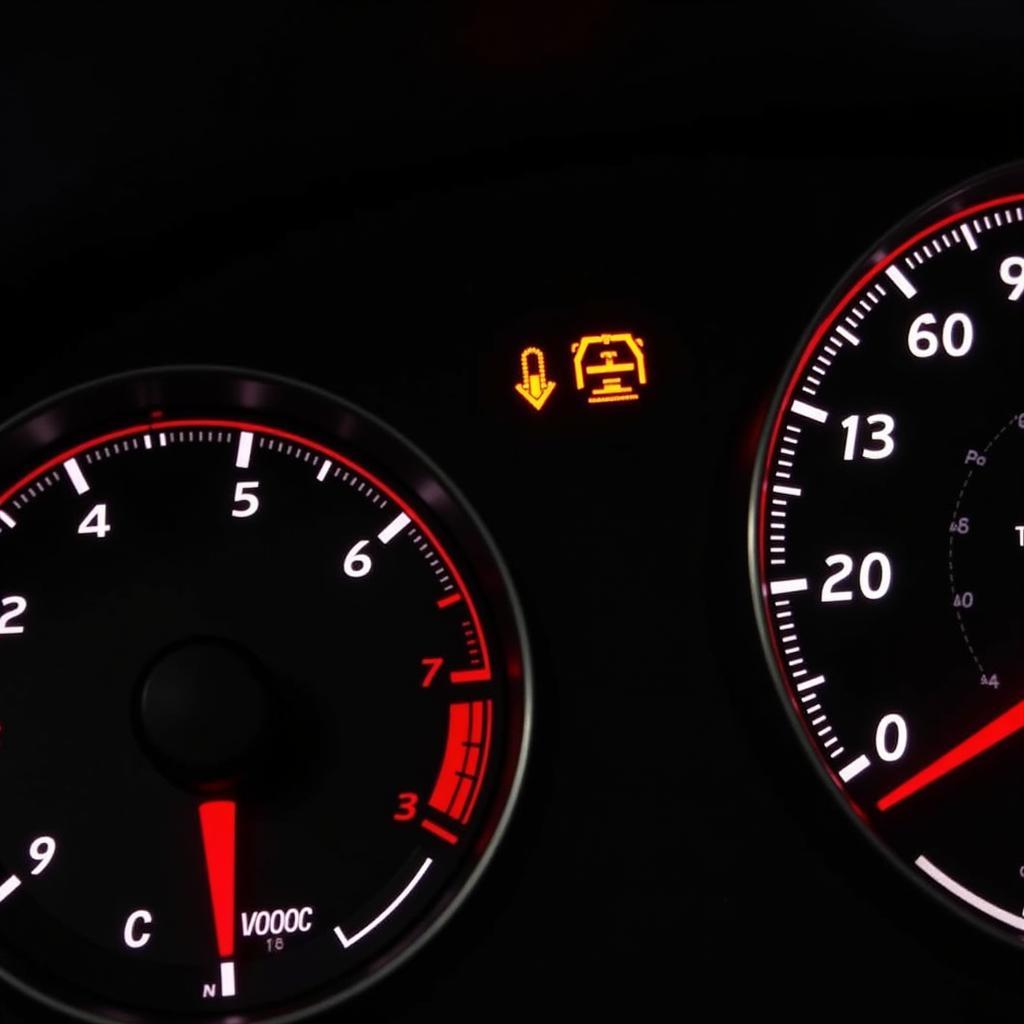The coolant warning light on your Seat Leon is a crucial safety feature that shouldn’t be ignored. It illuminates on your dashboard when the engine temperature exceeds safe operating levels or if there’s an issue with the cooling system. Understanding the potential causes and how to respond can save you from costly repairs and keep you safe on the road.
Common Causes of a Seat Leon Coolant Warning Light
Several factors can trigger the coolant warning light in a Seat Leon. These include:
- Low Coolant Level: The most frequent culprit is simply a low coolant level in the reservoir. This can occur due to a leak, evaporation over time, or if the coolant hasn’t been topped up recently.
- Faulty Thermostat: The thermostat regulates the flow of coolant to the engine. A stuck thermostat can disrupt this flow, causing the engine to overheat and trigger the warning light.
- Cooling Fan Malfunction: The cooling fan draws air through the radiator to cool the coolant. If the fan fails, the coolant can overheat, particularly during idling or slow speeds.
- Faulty Water Pump: The water pump circulates coolant throughout the engine. A malfunctioning water pump can lead to inadequate coolant circulation and overheating.
- Leaking Radiator: A leak in the radiator or hoses can cause a loss of coolant, leading to overheating and triggering the warning light.
- Head Gasket Issue: In more severe cases, a blown head gasket can allow coolant to leak into the engine cylinders, leading to a rapid increase in engine temperature and potential engine damage.
 Seat Leon Coolant Reservoir
Seat Leon Coolant Reservoir
What to Do When the Coolant Warning Light Comes On
If your Seat Leon’s coolant warning light illuminates, it’s crucial to take immediate action to prevent potential engine damage:
- Pull Over Safely: As soon as it’s safe, pull over to the side of the road and turn off the engine. Continuing to drive with an overheating engine can lead to severe damage.
- Allow the Engine to Cool: Let the engine cool down completely before attempting any inspection. Opening the hood immediately after turning off the engine can be dangerous due to high temperatures.
- Check the Coolant Level: Once the engine has cooled, carefully open the hood and visually inspect the coolant reservoir. It’s usually a translucent plastic tank with minimum and maximum level markings.
- Top Up Coolant (If Necessary): If the coolant level is low, carefully add a 50/50 mixture of coolant and distilled water to the reservoir, up to the maximum level mark. Avoid overfilling.
- Restart the Engine and Monitor: After topping up the coolant, restart the engine and monitor the warning light and temperature gauge closely.
- Seek Professional Help: If the warning light persists, the coolant level remains low, or the engine overheats again, it’s crucial to seek immediate assistance from a qualified mechanic or your Seat dealership.
 Seat Leon Dashboard Warning Lights
Seat Leon Dashboard Warning Lights
Preventing Coolant Warning Light Issues
Regular maintenance and inspections can help prevent coolant-related problems in your Seat Leon:
- Regular Coolant Checks: Check the coolant level in the reservoir at least once a month and top it up if necessary.
- Scheduled Coolant Flushes: Following your Seat Leon’s recommended maintenance schedule, flush and replace the coolant at the specified intervals. This ensures optimal cooling system performance.
- Inspect for Leaks: Regularly inspect the radiator, hoses, and connections for any signs of leaks, such as wet spots, drips, or a sweet smell.
- Address Issues Promptly: If you notice any unusual engine temperatures, coolant leaks, or warning light illuminations, address them promptly to prevent further damage.
 Seat Leon Engine Bay Inspection
Seat Leon Engine Bay Inspection
Understanding Seat Leon Warning Lights
The coolant warning light is just one of several warning lights on your Seat Leon’s dashboard. Familiarizing yourself with all the warning lights and their meanings outlined in your owner’s manual is essential.
For more information on Seat Leon warning lights, refer to these resources:
Expert Insight
“Ignoring a coolant warning light is like playing Russian roulette with your engine,” says John Miller, a seasoned automotive technician with over 20 years of experience. “The consequences can range from expensive repairs to complete engine failure.”
“Regular maintenance, including coolant checks and flushes, is the best way to prevent these issues and keep your Seat Leon running smoothly.”
Conclusion
The coolant warning light in your Seat Leon serves as a vital alert, indicating potential issues with your engine’s cooling system. Promptly addressing the underlying cause and seeking professional help when needed can prevent costly repairs and ensure a safe and enjoyable driving experience. Regular maintenance and proactive inspections are crucial to keep your Seat Leon’s cooling system in top condition and avoid unexpected breakdowns.
